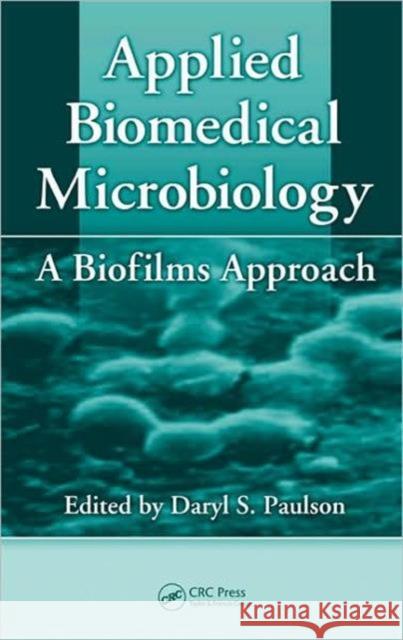Applied Biomedical Microbiology: A Biofilms Approach » książka
Applied Biomedical Microbiology: A Biofilms Approach
ISBN-13: 9780849375699 / Angielski / Twarda / 2009 / 176 str.
Applied Biomedical Microbiology: A Biofilms Approach
ISBN-13: 9780849375699 / Angielski / Twarda / 2009 / 176 str.
(netto: 1017,83 VAT: 5%)
Najniższa cena z 30 dni: 1007,48
ok. 22 dni roboczych
Dostawa w 2026 r.
Darmowa dostawa!
From the slippery covering on rocks in a stream, to the clogging slime in a bathtub drain, biofilms are present in everyday life in a variety of forms. This seemingly harmless build-up also accounts for 80 percent of all microbial infections. With chapters authored by experienced contributors from academia and industry, Applied Biomedical Microbiology: A Biofilms Approach demonstrates effective ways to combat the health and economic havoc that biofilms are wreaking, while also tapping into their positive potential. Replete with Tables and Illustrations, Many in Color
Under the editorial guidance of esteemed industrial microbiologist Dr. Daryl Paulson, this book presents an in-depth discussion of medically challenging biofilms. It provides a solid foundation in the basic microbiology of biofilms and then goes on to discuss the biofilms associated with medical devices, catheters, and dental unit water lines as well as those that impact cardiovascular medicine, the gastrointestinal system, periodontal disease, and chronic wounds. This informative work concludes with an exploratory chapter of the various methods used to investigate biofilms. Applied Biomedical Microbiology: A Biofilms Approach presents key information clearly and concisely a useful guide for environmental, food, and water microbiologists as well as biochemists, pharmaceutical scientists, and product and biofilm engineers."
Biofilms now account for over 80 percent of microbial infections in the body. The Handbook of Applied Biomedical Microbiology presents an in-depth discussion of medically challenging biofilms, written from a variety of perspectives by leading researchers. It provides a solid foundation in the basic microbiology of biofilms and then goes on to discuss those biofilms associated with medical devices, catheters, and dental unit water lines as well as those that impact cardiovascular medicine, the gastrointestinal system, periodontal disease, and chronic wounds. A final chapter addresses a variety of methods used to investigate biofilms.











